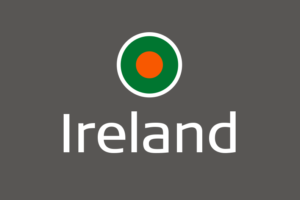Ireland: Retirement: Mandatory Pension Auto-Enrollment for Employers
 In Ireland, mandatory pension auto-enrollment is on the horizon. Employees in Ireland, working for private companies, do not have to join a pension scheme. This has led to a situation where over 50% of employees working in the Irish private sector have no pension or retirement plan.
In Ireland, mandatory pension auto-enrollment is on the horizon. Employees in Ireland, working for private companies, do not have to join a pension scheme. This has led to a situation where over 50% of employees working in the Irish private sector have no pension or retirement plan.
The proposed solution is private pension auto-enrollment
Compulsory defined contribution pension arrangements for employer and employees could be set up under a series of Master Trusts operated by four providers (who will submit tenders to the government to do so). Fund Management Charges will be fixed at 0.5% and the options will be limited.
Who will this impact?
Employers and anyone on the company payroll between the age of 23 and 60, earning €20K or more a year will be automatically enrolled.
Opt-Out/Opt-In?
Employees must wait six months if they want to opt-out – the hope being, that like anything, once this is habitual, people will continue contributing. If an employee opts-out they can get their contributions back.
Lower paid employees (under €20K), or anyone above or below the mandatory age ranges, can opt-in.
How much will have to be put in?
Estimations for initial contributions is about 1.5% of salary with an equivalent employer match, applying to a max salary of €75K. This contribution will then rise to a max 6% over a period up to 10 years. This entitlement will be cumulative, so it won’t reset if employees change jobs.
Glennon’s observations
- All of the above is subject to change and nothing is set in stone.
- There are no discussions about eliminating the state pension, so the current €12K at age 68 would be additional to a private retirement fund, assuming the law continues to state age 68 and doesn’t edge up to age 69 or70.
- Anyone who currently has an occupational pension scheme (that meets prescribed criteria, as yet to be set) may be exempt from auto-enrollment.
- The current income tax relief system for pension contributions appears to be more favorable for higher income earners (about 40%) versus the effective proposed contribution top-up of 25% under auto-enrollment. An attempted harmonization is uncertain.
- Getting more workers into pensions is always a good thing so perhaps something is better than nothing given how many people are without a pension.
- The role of the financial advisor is unclear for auto-enrollment participants. There seems to be little discussion around how employees will be able to access advice on their fund selection, retirement goals and contribution levels. Also, who will pay for this service? With low 0.5% annual fund management charges, it is not likely to be the provider.
This article is courtesy of Glennon, Asinta’s Partner in Ireland.
